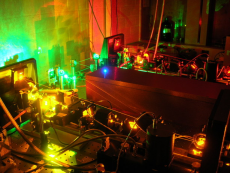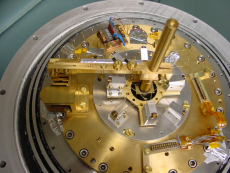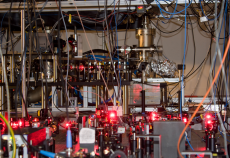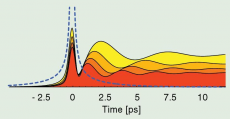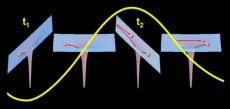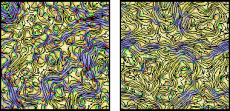CQD Special Seminar
23. May 2019 09:00
Seminarraum, Institut für Theoretische Physik, Philosophenweg 16Far-from-equilibrium dynamics of molecules in 4He nanodroplets: a quasiparticle perspective
Dr. Giacomo Bighin
IST Austria, Klosterneuburg, Austria
Angular momentum plays a central role in a plethora of quantum processes, from nuclear collisions to decoherence in quantum dots to ultrafast magnetic switching. Here we consider a single molecule embedded in a superfluid Helium nanodroplet as a prototype of a fully controllable many-body system in which to reveal angular momentum dynamics: an ultrashort, high-intensity laser pulse can induce molecular axis alignment, creating extreme out-of-equilibrium conditions, while imaging of molecular fragments after Coulomb explosion allows to obtain time-resolved measurements of molecular alignment [1].
The rotational dynamics of a molecule in superfluid Helium cannot be simply understood in terms of interference of rotational molecular states due to the strong interactions with many-body environment: we show that this scenario can be described in terms of the angulon quasiparticle [2,3]—a quantum rotor dressed by a field of many-body excitations—with a very good agreement with experimental data [4] for several molecular species and across a wide range of laser fluences. The dynamical theory we develop contributes to advancing the understanding of angular momentum dynamics in a many-body environment, with applications ranging from ultracold molecules to condensed matter.
1. D. Pantlehner et al., Phys. Rev. Lett. 110, 093002 (2013).
2. R. Schmidt and M. Lemeshko, Phys. Rev. Lett. 114, 203001 (2015).
3. M. Lemeshko, Phys. Rev. Lett. 118, 095301 (2015).
4. I.N. Cherepanov, G. Bighin, L. Christiansen, A.V. Jørgensen, R. Schmidt, H. Stapelfeldt, M. Lemeshko, submitted
Fractal ground state of Wigner chains in periodic potentials
Prof. Dr. Giovanna Morigi, Naturwissenschaftlich-Technische Fakultät, Universität des Saarlandes, KIP, HS 2


